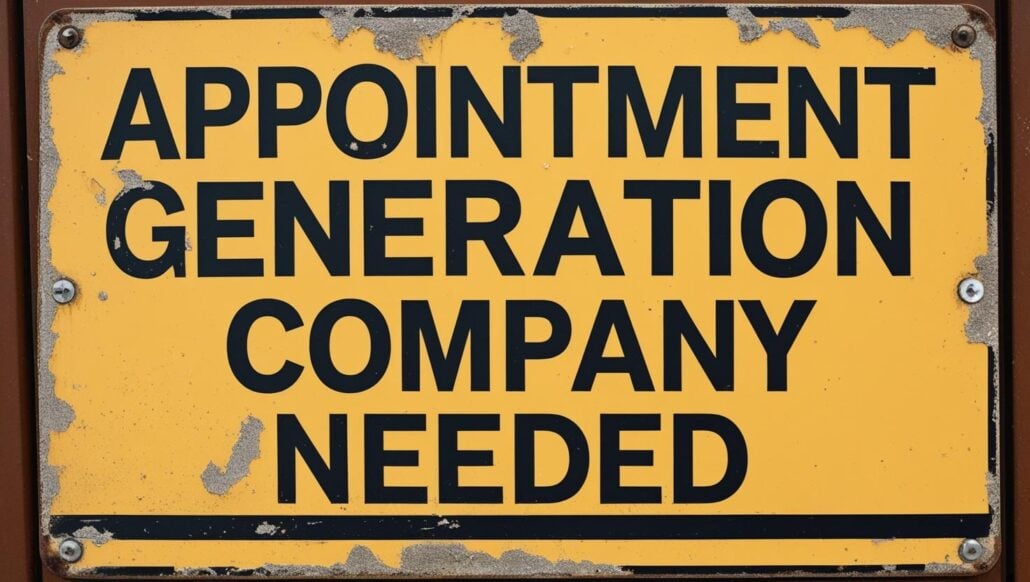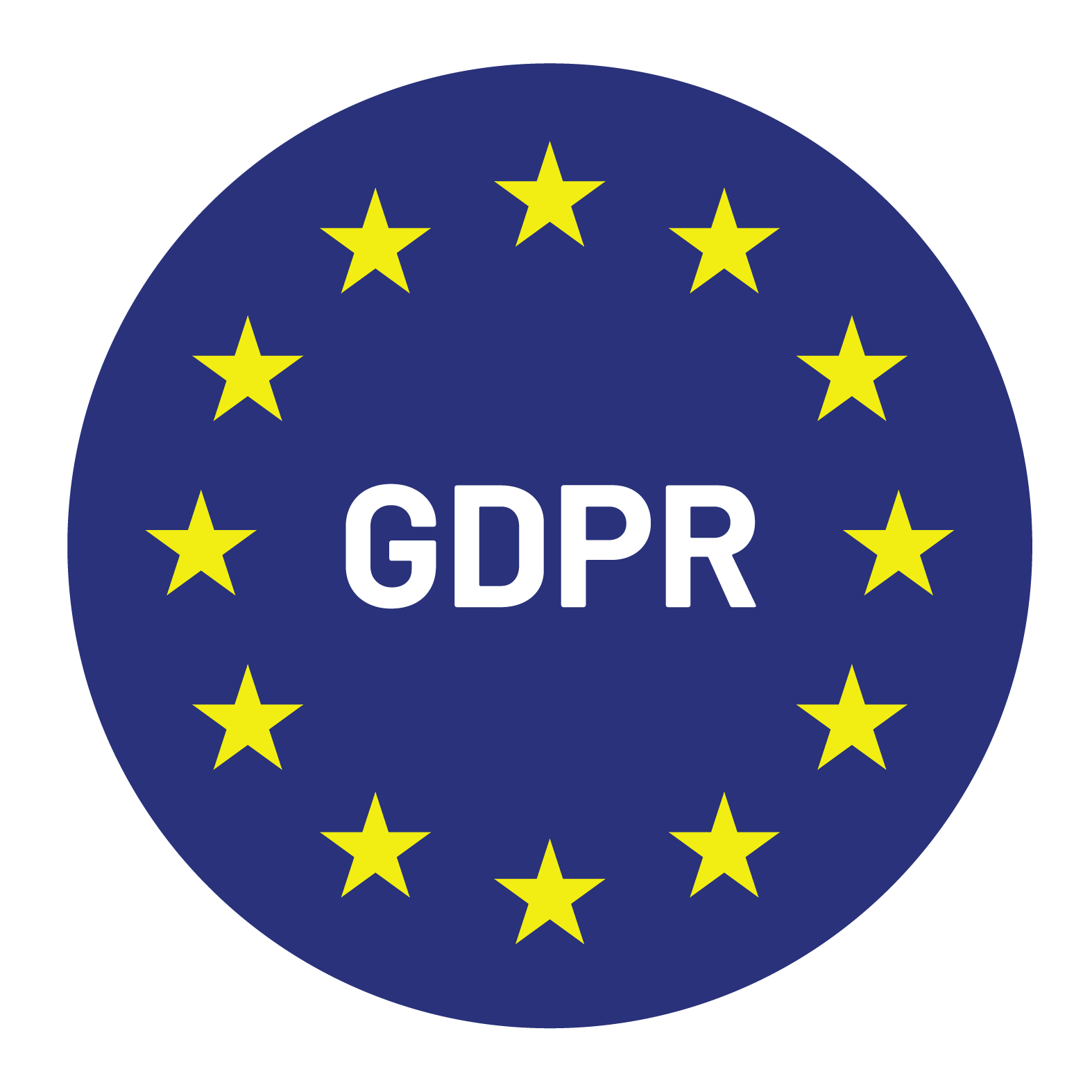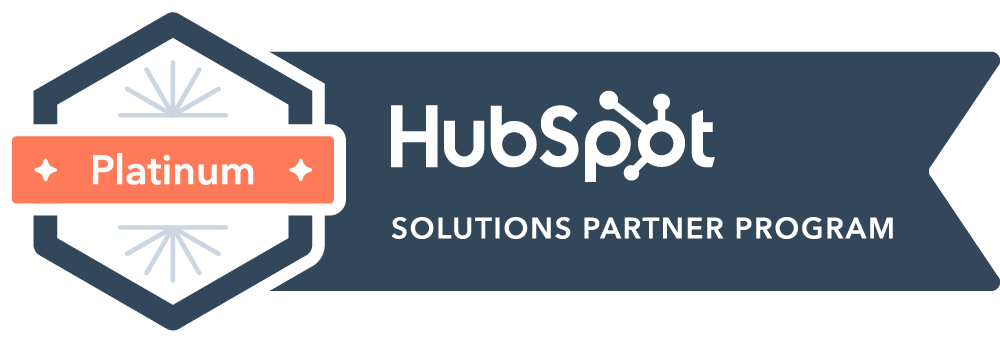How Appointment Generation Companies Eliminate the Cost of Poor Lead Generation

Table of Contents B2B companies often underestimate how damaging poor lead generation can be. It is not just about the wasted spend on acquiring irrelevant contacts. Low-quality leads ripple through the entire sales pipeline, inflating costs, reducing productivity, and stretching sales cycles. Poor lead generation can be defined simply: prospects who lack buying intent, fall outside the target market, or lack decision-making authority. On paper, they look like pipeline opportunities. In reality, they drain sales teams’ time, inflate acquisition costs, and distort performance metrics. The impact is significant. According to Ascend2, 77% of B2B marketers cite improving lead quality as one of the most important goals in their lead generation strategy, and 53% identify it as their most significant barrier. For SaaS businesses, where sales cycles are lengthy and acquisition costs are closely scrutinized, poor lead generation is more than inefficient — it is expensive. Appointment generation companies exist to solve this problem directly. By qualifying prospects, aligning outreach with market needs, and focusing on meetings with genuine decision-makers, they prevent businesses from paying the hidden costs of poor-quality leads. Quantifying Direct Financial Costs of Poor Leads The true cost of poor lead generation becomes clear once you follow the money. Every weak lead has a ripple effect that compounds over time. Cost per Acquisition Calculations Marketing teams often track cost per lead, but that metric hides the reality. A low-cost lead that never converts is not cheap. What matters is cost per acquisition (CPA). If it takes 50 poor leads to generate a single customer, CPA balloons beyond sustainable levels. A simple framework illustrates the point: CPA = (Total Spend on Lead Generation) ÷ (Number of Customers Acquired) Without quality filtering, spend increases while conversion rates fall. This is how poor leads silently inflate acquisition costs. Wasted Sales Team Compensation Sales development representatives (SDRs) and account executives are expensive resources. When they spend hours chasing unqualified prospects, salaries and commissions turn into sunk costs. If an AE spends 20 percent of their time on low-quality leads, that translates directly into reduced pipeline and missed revenue opportunities. Technology and Infrastructure Costs Every poor lead still enters the system. That means CRM entries, automation workflows, and data enrichment costs, all applied to prospects who will never buy. Multiply this across thousands of weak contacts, and infrastructure costs rise for no return. Marketing Budget Waste Paid campaigns, webinars, and content distribution all contribute to leads. If the targeting is wrong or the qualification is absent, those dollars vanish without a measurable return. Many SaaS companies find that a large portion of marketing spend fails not because of volume but because of poor alignment with buyer intent. How Appointment Generation Companies Solve These Problems Appointment generation companies specialize in fixing the inefficiencies that poor lead generation creates. Their model is designed to prioritize quality over volume, and that distinction changes outcomes across the pipeline. Specialized Expertise in Target Market Qualification Appointment setting partners build detailed profiles of the target market and decision-making personas. They know the industries, titles, and buying signals that matter, and they apply this expertise before a single outreach email is sent. Established Processes for Identifying High-Intent Prospects Instead of filling the funnel indiscriminately, appointment generation services focus on identifying prospects who are actively researching solutions or who match established buying criteria. This alignment increases conversion rates and shortens sales cycles. Economies of Scale and Technology Advantages These companies operate with infrastructure already in place: advanced sales engagement platforms, intent data tools, and experienced SDR teams. Businesses gain access to these systems without building them internally. Flexible Scaling Because appointment setting companies already have trained staff and established processes, businesses can scale outreach up or down quickly depending on goals. This avoids the overhead of hiring or downsizing internal teams. Trained SDRs Without Recruitment and Training Costs Recruiting SDRs is expensive and time-intensive. Training them to full productivity can take months. Appointment generation companies provide ready-to-go SDRs who are already trained in outreach, qualification, and appointment booking. Key Features to Look for in Appointment Setting Partners Not all appointment generation providers operate at the same level. Choosing the right partner requires evaluating key features that indicate quality and reliability. Industry-Specific Experience Experience in your industry matters. An SDR who understands SaaS sales conversations, for example, will perform better than one without that context. Transparent Reporting and Performance Metrics Clear reporting on outreach volume, conversion rates, and meetings booked allows you to measure ROI accurately. Transparency prevents the risk of paying for activity rather than results. Quality Assurance Processes Look for providers that monitor and review calls, validate data quality, and enforce consistency. Quality assurance ensures that meetings booked are truly with qualified decision-makers. Technology Stack and Integration Capabilities A strong partner will integrate seamlessly with your CRM and tech stack. This avoids data silos and ensures sales teams can act immediately on booked meetings. Pricing Models and ROI Measurement Clear pricing structures tied to measurable outcomes give businesses confidence in ROI. The right model should reduce risk and align incentives with your success. Case Study: Before and After Metrics Whistle has worked with companies across industries to turn weak pipelines into measurable revenue. A clear example is Argus Cyber Security (now PlaxidityX), a global leader in automotive cybersecurity. Argus faced low inbound conversion rates, winning just 2 out of every 83 qualified leads. Their Account Executives relied mainly on email and lacked structured qualification processes, which limited results. Whistle introduced stronger qualifications, added transparency, and provided one full-time seat (two SDRs) to manage leads and prospect engagement. Within three months, the campaign delivered 29 meetings, 6 SQLs, $750,000 in opportunities, and a 41x ROI. An internal survey showed 83 percent of employees rated the project positively. Implementation Timeline and Process Engaging with an appointment generation company is not a long, disruptive process. Most businesses begin to see results within weeks. Onboarding Process The process typically starts with a workshop to define the target market,
25 Proven SaaS Lead Generation Strategies That Drive Exponential Growth

Table of Contents When you’re running a SaaS business, growth is only as good as your lead pipeline. The right lead generation strategy can help you capture the attention of your ideal buyers, shorten sales cycles, and increase your monthly recurring revenue (MRR). If you’re scaling a startup or optimizing a mature sales engine, these 25 proven SaaS lead generation strategies will give you the blueprint to drive consistent, high-quality pipeline. If you’re looking for expert help, a specialized SaaS lead generation company like Whistle can build and execute these strategies end-to-end. 1. Define a Hyper-Specific ICP (Ideal Customer Profile) Vague targeting leads to wasted spend. Narrow your ICP to the industries, company sizes, job titles, and pain points most likely to convert. Most SaaS companies make their ICP too broad, thinking it will increase their total addressable market. In reality, specificity drives better conversion rates and shorter sales cycles. Pro tip: Use tools like LinkedIn Sales Navigator or ZoomInfo for precision targeting. 2. Build Buyer Personas That Go Beyond Demographics A winning SaaS lead generation company knows it’s not enough to know your buyer’s title; you need to understand their motivations, fears, and decision-making process. Layer in psychographic and behavioral data. What keeps them awake at night? What metrics are they judged on? How do they prefer to consume information and make purchasing decisions? 3. Leverage Multi-Touch Outbound Campaigns Cold calls alone won’t cut it. Combine cold calling services, targeted email sequences, LinkedIn outreach, and remarketing ads for maximum touchpoint coverage. The modern B2B buyer requires 7-10 touchpoints before they’re ready to engage, so your campaigns need to be persistent and multi-channel. 4. Invest in SEO for Sustainable Inbound Pipeline Optimizing for keywords like “best [your SaaS category] tools” or “how to solve [problem your SaaS solves]” drives long-term organic leads. Partner with SEO specialists to build topic clusters and authority content. SEO is a long-term play, but it delivers compound returns as your content gains authority and rankings improve. 5. Use Content Upgrades to Capture Leads Offer downloadable guides, calculators, or templates gated behind a form. The higher the perceived value, the more qualified the leads you’ll capture. Make sure your content upgrades are directly related to your product’s value proposition and provide immediate, actionable value to prospects. 6. Launch Product-Led Growth (PLG) Funnels If your product lends itself to self-serve signups, create a freemium plan or trial that allows prospects to experience value before speaking to sales. PLG reduces friction in the buyer journey and can significantly lower customer acquisition costs while increasing conversion rates. 7. Run Targeted LinkedIn Ads LinkedIn’s precision targeting for job titles, industries, and company sizes makes it perfect for B2B SaaS lead generation. Use conversation ads and retargeting for the best results. LinkedIn ads tend to have higher CPCs than other platforms, but the lead quality often justifies the investment for B2B SaaS companies. 8. Activate Intent Data Use platforms like 6sense or Bombora to find prospects actively researching your category, then prioritize them in your outreach. Intent data allows you to focus your resources on prospects who are already in-market, dramatically improving conversion rates and shortening sales cycles. 9. Partner with Complementary SaaS Companies Co-marketing partnerships help you reach aligned audiences without direct competition. Run joint webinars or bundled offers. Look for companies that serve the same buyer but solve different problems, creating natural partnership opportunities that benefit both organizations. 10. Publish Data-Backed Industry Reports Original research establishes credibility and earns backlinks. A good SaaS lead generation company can help with survey design, outreach, and distribution. Industry reports position your company as a thought leader while generating substantial lead volume and PR coverage. 11. Use Webinars as Demand Accelerators Webinars allow you to educate and engage prospects in real time. Promote them via email, social, and partner channels. Follow up within 24 hours to convert interest into meetings. Educational webinars that focus on industry challenges rather than product pitches tend to generate the highest-quality leads. 12. Optimize Your Free Trial Conversion Path Don’t just collect trial signups, nurture them with onboarding sequences, in-app guides, and triggered sales outreach. Most SaaS companies focus on getting trial signups but neglect the activation and conversion process, leaving significant revenue on the table. 13. Build an SDR Team (or Outsource It) An in-house SDR function can be costly and slow to scale. An outsourced SDR company like Whistle can hit the ground running with trained reps, proven scripts, and established workflows. This approach eliminates the hiring, training, and management overhead while delivering immediate results. 14. Run Retargeting Ads Across Channels Retarget prospects who visited your pricing page or demo page but didn’t convert. Use urgency-driven copy and customer proof points. Retargeting campaigns often deliver the highest ROI because they target prospects who have already shown interest in your solution. 15. Create a Customer Referral Program Reward your existing customers for introducing you to new ones. Referrals tend to close faster and churn less. Design incentive structures that motivate customers to make introductions without feeling like they’re being asked to do sales work for you. 16. Engage in Niche Community Marketing Participate in industry-specific forums, Slack groups, and niche LinkedIn groups. Provide value before pitching your solution. Community marketing requires patience and authenticity, but can generate highly qualified leads who are already warmed up through your helpful contributions. 17. Use Conversational Marketing Live chat and AI chatbots help you capture and qualify leads in real time. Route qualified chats directly to your sales team or SDRs. Implement chatbots on high-intent pages like pricing, features, and case studies for maximum impact. 18. Implement Account-Based Marketing (ABM) Target a curated list of high-value accounts with personalized campaigns. This works especially well for enterprise SaaS deals. ABM requires more investment per prospect but delivers significantly higher conversion rates and deal sizes for target accounts. 19. Optimize Your Landing Pages for
Case Study: How a FinTech Software Leader Scaled Sales with Whistle in 6 Months

Table of Contents Fintech companies face a constant balancing act: expanding quickly enough to meet market demand while ensuring that sales execution keeps pace with product innovation. Scaling internationally adds another layer of complexity, with new markets, cultural nuances, and competitive pressures shaping every move. For one fintech software leader, achieving rapid growth meant finding a partner who could deliver results without delay. In just six months, Whistle helped the company schedule 78 meetings, hold 46 conversations, and create 29 new opportunities. The campaign highlights how fintech appointment setting, when managed strategically, can accelerate expansion and strengthen long-term sales performance. About the Client The client is a fintech software company specializing in AI-powered transaction monitoring. Their solution enables banks and payment providers to increase revenue through reliable domestic and cross-border payments. With Series D funding and a team of 51 to 200 employees, the company had established itself as a market leader. At this stage, the next challenge was translating strong product momentum into consistent international sales growth. The Challenges Need for Rapid Sales Scale-Up The company had reached a point where speed was critical. Building an in-house sales development team from scratch would have delayed growth at a time when opportunities were accelerating. They needed a solution that could generate qualified sales appointments immediately. Limited International Sales Coverage Their existing sales team had succeeded locally, but international markets required a more structured approach to sales. Expanding into the US and UK, two of the most competitive fintech hubs, and later into Africa, demanded both precision and resources they did not yet have. Requirement for Flexibility and Speed Growth priorities change quickly. The company needed flexibility to adjust its outreach across regions without having to rebuild its internal structure each time. A partner that could combine speed with adaptability was essential. Our Approach Whistle partnered with the client to design a campaign that matched strategic priorities with tactical execution. Structured Market Prioritization The campaign began by focusing on the US and UK markets. As the client refined its strategy, the focus shifted to Africa and the UK. This ability to pivot quickly ensured that resources were always aligned with the highest-value opportunities. Dedicated Resource Allocation Whistle provided geo-dedicated appointment setters, creating outreach that felt local and relevant. This approach improved prospect engagement and produced stronger handoffs to the client’s internal sales team. Clear Communication & Onboarding A structured onboarding process and strong communication between Whistle and the client’s Head of Sales established alignment early. This foundation allowed both teams to operate as one, adjusting seamlessly as the campaign evolved. The Results Campaign Performance Within six months, Whistle delivered measurable results: 78 meetings scheduled 46 meetings held 29 new opportunities created Impact These results gave the client’s sales team a consistent flow of qualified opportunities, validated their ability to scale internationally, and demonstrated that outsourcing appointment setting can be a practical strategy for growth-stage fintech software companies. Key Insights Several important takeaways from this campaign are worth highlighting for fintech software companies considering how to scale their sales development efforts: Market focus outperforms broad coverage. Prioritizing specific geographies created momentum and measurable returns. Sales pipeline growth is less about volume and more about precision. Dedicated teams improve conversion. Geo-specific appointment setters not just added capacity but also local context. The difference between a generic outreach and a tailored conversation showed up in the quality of meetings. Sales development thrives on integration, not separation. The client treated Whistle as part of its own sales organization, and that alignment proved critical. Outsourcing sales development is most effective when it feels like an extension of the internal team, not a disconnected vendor. Taken together, these insights highlight a broader point: fintech sales growth depends on strategic clarity and disciplined execution. Companies that scale effectively know where to focus, who should execute, and how to maintain tight alignment between internal and external resources. Testimonial “Whistle’s thorough onboarding process and the strong communication between the two teams contributed greatly to the success of the campaign.” – Head of Sales and Business Development, Client Company Future Outlook This case illustrates a larger trend in fintech sales strategy. As more fintech software companies expand internationally, the ability to scale quickly without losing precision will become a defining advantage. Building in-house teams still has its role, but flexibility and speed are increasingly non-negotiable. For this client, Whistle’s support created a repeatable model: structured market prioritization, dedicated outreach, and integrated communication. That model continues to guide their expansion into new regions, giving them a sales development process that adapts as their business grows. For other fintech companies, the lesson is clear. Appointment setting is more than a tactical activity; it is a strategic enabler of international sales growth. With the right partner, companies can scale pipelines rapidly, improve efficiency, and capitalize on opportunities that might otherwise be missed. Whistle works with fintech software companies and other high-growth businesses to build sales pipelines that deliver measurable results. If scaling your reach and securing qualified appointments is a priority, explore how Whistle can support your growth.
10 Questions to Ask Before Hiring a SaaS Lead Generation Company
Table of Contents In SaaS, your pipeline is everything. A strong flow of qualified meetings fuels growth, keeps your sales team focused, and ensures you’re not relying on “hope” to hit your revenue targets. But generating that pipeline consistently and at scale isn’t easy. That’s why many sales and marketing leaders turn to a SaaS lead generation company. The right partner can act as an extension of your team, delivering high-quality appointments with decision-makers who are ready to buy. The wrong partner? They can waste months of budget and erode trust with your target market. According to HubSpot’s State of Sales Report, 61% of marketers consider generating traffic and leads their top challenge. For SaaS companies specifically, this challenge is amplified by longer sales cycles and complex buying committees that can include everyone from IT managers to C-suite executives. To help you make the right call, here are 10 essential questions to ask any potential appointment setting partner before signing a contract. 1. Do They Specialize in SaaS or B2B Tech? Not all lead generation is created equal. Selling SaaS is very different from selling consumer products or one-off services. The sales cycles are longer, the stakeholders are more complex, and the value proposition often needs deep explanation. A B2B lead generation agency with SaaS experience will understand how to position subscription-based value, navigate multi-stakeholder buying groups, and use messaging that addresses both technical and business decision-makers. They’ll know that a typical SaaS sale involves an average of 6.8 stakeholders according to Gartner research, and they’ll craft outreach strategies accordingly. An agency that’s fluent in SaaS will ramp faster, produce better-qualified leads, and save you from costly trial-and-error. 2. What Is Their Approach to Targeting and ICP Alignment? One of the most common appointment setting challenges is chasing the wrong prospects. If your Ideal Customer Profile (ICP) is too broad or based on outdated assumptions your calendar will fill with low-value meetings. The best partners ask how you define and refine your ICP, whether you use firmographic, technographic, and intent data to guide targeting, and how often you review and adjust based on performance. According to Salesforce research, companies that align their sales and marketing teams around a well-defined ICP see 208% higher revenue growth. A sophisticated partner will leverage tools like ZoomInfo, Apollo, or Clearbit to build precise targeting frameworks that go beyond basic demographics to include technology stack, growth stage, and buying intent signals. Best practice: The right appointment setting partner will collaborate with you to build a precise targeting framework and continually fine-tune it to improve results. 3. How Do They Source and Enrich Lead Data? Great outreach starts with great data. If your partner is relying on generic list providers, you’ll get bounces, irrelevant contacts, and unresponsive prospects. Look for a lead qualification services partner who uses multiple trusted data sources, validates and enriches contact data in real time, and segments lists for personalized outreach. They should have processes for cross-referencing multiple databases, verifying email deliverability, and maintaining GDPR compliance. The cost of bad data is significant. IBM estimates that poor data quality costs U.S. businesses $3.1 trillion annually. In the context of lead generation, bad data means wasted outreach efforts, damaged sender reputation, and missed opportunities with your actual target prospects. Pro tip: Poor data is a silent pipeline killer. Ask for examples of their data hygiene process and how they maintain list freshness over time. 4. What Outreach Channels Do They Use? If a potential partner’s outreach strategy begins and ends with email, that’s a red flag. Modern top-of-funnel sales strategy blends multiple channels: email, phone, LinkedIn, and other social channels, and direct mail or events when relevant. Research from Rain Group shows that it takes an average of 8 touchpoints to generate a viable sales opportunity, and those touchpoints need to span multiple channels to be effective. Why multichannel wins: Different prospects respond to different mediums. The more touchpoints, the better your chances of starting a conversation. A sophisticated partner will also understand channel sequencing, knowing when to follow up an email with a phone call, or when to connect on LinkedIn after a successful email exchange. 5. How Do They Personalize Messaging at Scale? Prospects expect messages that feel relevant, not spammy templates blasted to thousands. According to Campaign Monitor, personalized email campaigns deliver 6x higher transaction rates. The challenge is maintaining personalization while operating at scale. Leading agencies use a combination of automation and human creativity to achieve this balance. They gather personalization insights from multiple sources—recent company news, social media activity, technology stack changes, or industry-specific pain points. A strong SaaS lead generation company will combine data signals with human creativity to craft messaging that feels one-to-one, even when running at scale. They’ll A/B test different messaging approaches and continuously optimize based on response rates and meeting quality. 6. What KPIs Do They Track and Report On? It’s easy to get dazzled by vanity metrics like “emails sent” or “calls made.” But what matters is the number of qualified sales opportunities generated. You should expect reporting on meetings booked, meeting attendance rates, conversion from meetings to sales-qualified opportunities (SQLs), and average deal size influenced. The best partners also track leading indicators like email open rates, response rates, and phone connection rates to identify potential issues before they impact results. According to Salesforce, companies that track the right sales metrics are 33% more likely to be high performers. A partner focused on outcomes rather than just activity will keep your pipeline aligned with revenue goals and provide actionable insights for improvement. 7. What Is the Qualification Process for Meetings? Not every booked meeting is worth your sales team’s time. A true appointment-setting best practices approach means leads are vetted before they hit your calendar. The qualification process should include confirming interest, authority, and fit before scheduling. They should verify that prospects have genuine buying intent, budget authority or influence, and a realistic timeline
The Hidden Cost of Poor Lead Quality in SaaS Lead Generation

Table of Contents More than half of B2B companies report that lead quality is their single biggest challenge, according to HubSpot’s State of Marketing report. For SaaS businesses, where sales cycles are often complex and customer retention is key to long-term profitability, this problem is magnified. Yet, too many teams still measure success in terms of volume: more contacts in the database, more meetings booked, and more top-of-funnel activity. The truth is that poor lead quality quietly erodes sales efficiency, marketing ROI, and ultimately, the viability of the SaaS sales pipeline. We’re examining what “poor lead quality” really means in SaaS, why it carries such steep financial and operational costs, and how SaaS companies can reframe their strategies to prioritize quality over volume. What Constitutes “Poor Lead Quality” in the SaaS Context In SaaS lead generation, a poor-quality lead is not simply someone who doesn’t buy. It is any contact that does not fit the company’s defined Ideal Customer Profile (ICP) or lacks the intent and readiness to engage meaningfully. Common examples include leads outside target industries, decision-makers without budget authority, or small companies trialing software without long-term potential. The misconception that more leads equate to more revenue continues to skew strategies. Research from Gartner found that 70% of leads in B2B databases are not actionable. That means a significant portion of marketing spend is directed toward prospects who will never convert. For SaaS companies, this waste compounds quickly because the model relies not only on acquisition but also on retention and expansion. The Direct Financial Costs of Poor Lead Quality Wasted Marketing Spend and Inflated CPL Metrics When marketing campaigns generate high volumes of poor-fit leads, cost-per-lead (CPL) becomes misleading. A campaign may appear efficient on paper, but if the majority of contacts cannot progress through the qualification process, the actual cost per opportunity or customer acquisition rises sharply. SaaS companies frequently underestimate how much budget is tied up in these inefficiencies. CAC, CLTV, and the CAC:LTV Ratio at Risk The Customer Acquisition Cost (CAC) to Customer Lifetime Value (CLTV) ratio is one of the most important health metrics for SaaS businesses. Poor lead quality drives CAC up while pulling CLTV down, as unfit customers often churn early. This ratio is critical for investors and boards assessing long-term growth potential. A widening gap caused by poor-fit customers not only strains short-term cash flow but also undermines valuation. Sales Resources Wasted on Unqualified Leads Sales teams are the most expensive resource in the revenue engine. When Account Executives spend hours chasing poorly qualified prospects, productivity drops and opportunity cost rises. According to Salesforce research, reps spend only about a third of their time selling. Adding weak leads to their pipeline dilutes that selling time even further. Distorted Attribution and ROI Bad data skews performance measurement. If lead sources are inflated with poor-quality contacts, attribution models provide misleading insights. Marketing channels may appear to perform better than they do, while high-value sources remain underfunded. This creates a cycle where wasted spend is repeated, and revenue growth stalls. Operational Impacts Beyond Direct Costs Lower Sales Team Productivity and Morale Sales professionals thrive when they can build momentum with qualified conversations. A pipeline full of low-fit leads frustrates even the most seasoned team, leading to demotivation and higher turnover. Recruiting and onboarding replacements add to costs that could have been avoided with stronger lead qualification processes. Longer Sales Cycles and Cash Flow Pressure Poor-fit leads often linger in pipelines longer because they require more education or simply avoid disengaging. These stalled opportunities extend average sales cycles, creating delays in revenue recognition and cash flow. For SaaS companies reliant on recurring revenue, these delays can place significant strain on monthly recurring revenue (MRR) growth targets. The Opportunity Cost of Pursuing Poor-Fit Leads Every minute spent chasing a low-value lead is time not spent with a high-value prospect. This is the true cost often overlooked. The opportunity cost of poor lead quality can amount to millions in lost revenue potential annually for growth-stage SaaS companies. CRM Data Pollution and Workflow Strain Poor quality leads do more than clutter sales inboxes; they pollute CRM systems. Incorrect firmographics, duplicate entries, and irrelevant contacts slow down automation workflows and reduce the accuracy of analytics. Over time, this compounds into wasted hours on system maintenance and faulty forecasting. Marketing and Sales Misalignment Over Lead Quality When marketing measures success by volume and sales measures success by revenue, misalignment is inevitable. Disputes over what constitutes a “good lead” erode trust between teams, making alignment strategies harder to implement. This cultural friction reduces the efficiency of the revenue engine as a whole. Long-Term Business Consequences Higher Churn from Mismatched Customers Even when poor-fit leads convert, they often churn quickly. Customers who were never aligned with the product’s value proposition place undue burden on Customer Success teams, inflating churn rates and reducing net revenue retention (NRR). Misguided Product Development Priorities If product feedback is gathered from customers who were never the right fit, development roadmaps risk being steered in the wrong direction. This can dilute product-market fit and slow innovation. Burnout in Customer Success Teams Supporting mismatched customers drains resources. Customer Success managers spend disproportionate time handling accounts that were mis-sold, leading to stress, burnout, and attrition in teams that are central to retention. Reputation Damage from Unsatisfied Clients Dissatisfied customers often make their voices heard more loudly than satisfied ones. Poor-fit customers who fail to achieve value can leave negative reviews, damaging brand reputation and making future acquisition harder. Forecasting and Planning Challenges Forecast accuracy relies on consistent pipeline quality. When large portions of the funnel are padded with poor-fit opportunities, forecasting becomes unreliable, which in turn impacts hiring plans, fundraising, and board-level decision-making. Strategies for Improving Lead Quality Refining Ideal Customer Profiles (ICPs) and Personas The foundation of better SaaS lead generation is a precise ICP. This requires more than broad descriptors like “mid-market technology companies.” High-performing SaaS businesses use granular criteria, including company
10 Warning Signs Your Sales Team Needs an Appointment Generation Company

Table of Contents Your sales team is talented. They’re motivated, trained, and armed with the right tools. And yet your pipeline isn’t growing the way it should. If that sounds familiar, you’re not alone. The pressure to fill your sales pipeline has never been higher. Yet many B2B SaaS companies are watching their internal SDR teams struggle with outdated processes, resource constraints, and burnout that’s killing their outbound efforts. That’s where a SaaS lead generation company comes in. If your current approach isn’t delivering the meetings and pipeline growth you need, it might be time to consider a different strategy. Here are 10 clear indicators that outsourcing your SDR function could transform your sales results. 1. Your SDRs Spend More Time Researching Than Prospecting If your sales development reps are spending hours each day building lists, cleaning data, and hunting for decision-maker emails, you’ve got a problem. Manual prospecting drains time and energy from high-value tasks like outreach and follow-ups. Business Impact: If an SDR spends 60% of their day on research and only 40% on actual prospecting, you’re paying full-time salaries for part-time results. You’re also burning through your team’s motivation and energy on tasks that could be automated or handled by specialized data providers. Solution: Outsourced SDR services solve this with ready-to-go data, real-time enrichment, and tools that keep the prospecting engine running, without overloading your internal team with administrative grunt work. 2. Your Calendar Is Filled With Low-Quality Sales Meetings One of the most frustrating appointment-setting challenges is spending valuable AE time on meetings that go nowhere. Nothing kills sales momentum like a calendar full of unqualified prospects who aren’t ready to buy, don’t have a budget, or lack decision-making authority. When your AEs are burning time on these meetings, they’re not working on deals that could close. Even worse, poor-quality meetings damage team morale and make your sales organization less efficient overall. Business Impact: When your SDRs don’t have the right frameworks to identify genuine prospects, they’ll book meetings just to hit their numbers. Solution: Appointment generation companies work from a laser-focused ICP and pre-qualify every lead before it hits your calendar. They understand the difference between someone who’s merely interested and someone who’s ready to engage in a sales conversation. That means more B2B sales meetings with decision-makers who want to buy. 3. Your Team Can’t Scale Outreach Fast Enough Your SDRs can only do so much. There are only so many hours in a day, and scaling an internal team takes months of hiring, training, and ramping new reps. Meanwhile, your competitors are moving faster and capturing market share you could have won. Business Impact: Internal scaling comes with significant risks. New hires might not work out, training costs add up quickly, and there’s no guarantee your expanded team will hit their targets. Plus, you’re competing for talent in a tight market where experienced SDRs command premium salaries. Solution: A SaaS lead generation company offers the people power and systems to expand your reach overnight, without the growing pains. They’ve already solved the scaling challenges and can deploy proven resources immediately. 4. SDR Burnout and Turnover Are High Burnout is real. So is the cost of constantly rehiring and retraining SDRs. Internal teams often face unrealistic activity targets, limited support, and repetitive work, all of which lead to churn. Business Impact: The average SDR tenure is just 1.5 years, and turnover costs can exceed $15,000 per rep when you factor in recruitment, training, and lost productivity. Internal teams often face unrealistic activity targets, limited career development support, and repetitive work, all of which lead to churn. Solution: Outsourced SDR partners are built for this work. They handle the heavy lifting while your internal team focuses on strategic deals and closing revenue. Professional SDR companies have refined processes, ongoing training programs, and career advancement paths that keep their teams motivated and productive long-term. 5. You’re Stuck Using Outdated Outreach Tactics If your team is still sending one-size-fits-all cold emails or relying solely on LinkedIn, it’s no wonder your connect rates are flatlining. Your prospects expect personalized, relevant communication that shows you understand their business challenges. But creating this level of personalization at scale requires sophisticated tools, data insights, and specialized expertise that most internal teams lack. Business Impact: Low response rates lead to fewer booked meetings, missed revenue targets, and declining SDR morale. Over time, outdated tactics erode your brand credibility and allow competitors, who are using smarter, more personalized outreach, to win deals you never even had a chance at. Solution: Today’s top-performing outreach strategies are multichannel, hyper-personalized, and driven by data. Appointment generation companies use advanced sequencing tools and behavioral insights to increase response rates and land qualified meeting opportunities. They’re constantly testing new channels, refining messaging, and adapting to changing buyer preferences. 6. Your Sales Pipeline Is Unpredictable (or Empty) The dreaded pipeline drought. One month, your SDRs are killing it. The next? Crickets. Business Impact: This kind of inconsistency wreaks havoc on forecasting and revenue targets. When your pipeline is unpredictable, everything downstream suffers from sales planning to resource allocation to investor confidence. You can’t build a sustainable business on feast-or-famine pipeline generation. Solution: A SaaS lead generation company brings in consistent top-of-funnel activity through repeatable, optimized systems so your pipeline stays full, predictable, and growing. They’ve refined their processes through hundreds of campaigns and can maintain steady output regardless of internal distractions or market fluctuations. 7. Your SDR KPIs Aren’t Aligned with Revenue Outcomes If your SDRs are judged on how many calls they made instead of how many qualified meetings they booked, something’s broken. Business Impact: The disconnect between activity and outcomes creates a culture where SDRs focus on hitting numbers rather than generating real business value. They’ll dial through lists without proper research, send generic emails to meet quotas, and book low-quality meetings just to satisfy their KPIs. Solution: Lead generation partners work from a sales enablement strategy that ties
Why B2B Lead Providers Are Replacing Traditional Lead Generation Methods in 2026

Table of Contents B2B sales have changed more in the past five years than it did in the previous two decades. Buyers are no longer responding to high-volume outreach and generic campaigns. They expect tailored experiences that recognize their unique business context, pain points, and specific timing. At the same time, sales and marketing teams are under pressure to drive pipeline growth with greater efficiency. Since 2020, the typical buying process has lengthened, involving more stakeholders and more digital touchpoints. By 2025, most B2B buyers will report a preference for digital-first research and engagement over phone calls or in-person meetings. LinkedIn’s latest B2B marketing report highlights that over 70 percent of buyers consult at least three digital sources before engaging a vendor. Gartner’s research shows that buyers spend only 17 percent of their purchase journey meeting with potential suppliers. Traditional Lead Generation Methods That Are Failing Cold Calls Are Losing Ground Cold calling once served as the backbone of B2B sales development. But buyer behavior has moved on. With call screening, mobile-only workforces, and reduced appetite for unscheduled outreach, fewer than two percent of cold calls convert into meetings. Buyers increasingly treat unexpected calls as interruptions rather than opportunities. The Email Fatigue Problem Email outreach has faced similar resistance. The sheer volume of sales emails means most never make it past spam filters or are deleted without opening. HubSpot’s 2025 State of Marketing Report notes that email open rates for B2B campaigns have dropped below 15 percent on average. What once felt efficient has become a race to the bottom. Generic Content Marketing Saturation Content marketing remains vital, but generic blog posts, whitepapers, and newsletters no longer generate high-quality leads on their own. Buyers have access to more information than ever, and mediocre content is drowned out quickly. To stand out, companies now require highly relevant and context-rich materials that speak directly to target accounts. How AI Has Transformed Prospect Identification and Qualification AI-Driven Enrichment Tools Artificial intelligence has redefined how companies find and qualify prospects. Data enrichment tools can automatically update CRM records with job changes, funding rounds, or expansion signals. This keeps pipelines fresh and ensures outreach is timely. Predictive Scoring Models AI-based scoring goes beyond demographic fit. Predictive models use firmographic, technographic, and behavioral data to assess which accounts are most likely to convert. This eliminates wasted effort on low-potential leads and prioritizes the right opportunities for sales teams. Personalization at Scale One of the most significant benefits of AI is the ability to personalize outreach across thousands of contacts. From tailored subject lines to messaging that reflects company-specific challenges, personalization no longer requires manual effort. When executed correctly, it increases engagement rates dramatically and positions sales teams as informed rather than intrusive. The Rise of Account-Based Marketing (ABM) Why ABM Is Replacing Broad-Based Lead Generation Account-based marketing has become the go-to approach for B2B companies because it aligns sales and marketing on shared high-value targets. Instead of scattering resources across thousands of contacts, ABM concentrates efforts on the accounts most likely to generate revenue. Forrester’s research confirms that companies running ABM see a 200 percent increase in deal size compared to non-ABM strategies. ROI from Targeted ABM Approaches The returns are difficult to ignore. ABM produces higher conversion rates, stronger relationships, and measurable ROI. It emphasizes quality over quantity, which has proven far more effective in an environment where buyers expect personalized engagement. How B2B Lead Providers Run ABM Specialized B2B lead providers excel at scaling ABM because they combine intent data, enriched databases, and outbound expertise. By running targeted campaigns on behalf of clients, they eliminate inefficiencies while giving sales teams ready-to-convert opportunities. The Value of Intent Data in Modern Lead Generation What Is Intent Data and Why It Matters Intent data captures signals from buyer behavior such as web searches, content downloads, or product comparisons. It identifies which accounts are actively researching solutions, helping sales teams approach prospects at the right time. How B2B Lead Providers Utilize Intent Signals B2B lead providers aggregate intent signals across multiple sources to identify high-priority accounts. They use this intelligence to segment outreach and deliver messaging that resonates with specific stages of the buying cycle. ROI Difference Between Intent-Based and Traditional Lead Generation The difference in outcomes is stark. Campaigns guided by intent data consistently outperform traditional lead generation, with shorter sales cycles and higher close rates. Instead of guessing who might be in-market, sales teams engage accounts that are already signaling readiness to buy. Why Specialized B2B Lead Providers Are Becoming Essential Deep Vertical Expertise Generalist approaches no longer work. Lead providers that specialize in sectors like cybersecurity, SaaS, or healthcare bring knowledge of buyer pain points and decision-making processes. This expertise ensures campaigns are relevant and effective. Access to Enriched, Compliant Databases Regulations such as GDPR and CCPA have made compliance a top priority. Specialized providers maintain databases that are not only accurate but also compliant with privacy standards. This reduces risk while improving efficiency. Plug-and-Play Scalability For companies looking to scale quickly, building an in-house demand generation team is resource-intensive. B2B lead providers deliver plug-and-play scalability, adding capacity immediately without the costs of recruitment, training, or management. Whistle has seen firsthand how companies gain from outsourcing to specialists. Our work with global clients shows that pairing enriched data with targeted ABM strategies leads to faster pipeline growth and measurable ROI. How to Transition from Traditional to Modern Lead Generation Audit Your Tech Stack The first step is understanding which tools are working and which are not. Many companies run overlapping platforms that add complexity without delivering value. A thorough audit helps identify gaps and streamline operations. Implement a Phased Transition Approach Shifting to modern lead generation does not need to happen overnight. Start with pilot campaigns targeting a small set of accounts using AI-driven tools or intent data. Measure results, refine the process, and expand gradually. The Future of B2B Lead Generation How AI Will Continue to Transform Prospect Engagement AI will become
10 Questions to Ask Before Hiring a SaaS Lead Generation Company

Table of Contents In SaaS, your pipeline is everything. A strong flow of qualified meetings fuels growth, keeps your sales team focused, and ensures you’re not relying on “hope” to hit your revenue targets. But generating that pipeline consistently and at scale isn’t easy. That’s why many sales and marketing leaders turn to a SaaS lead generation company. The right partner can act as an extension of your team, delivering high-quality appointments with decision-makers who are ready to buy. The wrong partner? They can waste months of budget and erode trust with your target market. According to HubSpot’s State of Sales Report, 61% of marketers consider generating traffic and leads their top challenge. For SaaS companies specifically, this challenge is amplified by longer sales cycles and complex buying committees that can include everyone from IT managers to C-suite executives. To help you make the right call, here are 10 essential questions to ask any potential appointment setting partner before signing a contract. 1. Do They Specialize in SaaS or B2B Tech? Not all lead generation is created equal. Selling SaaS is very different from selling consumer products or one-off services. The sales cycles are longer, the stakeholders are more complex, and the value proposition often needs deep explanation. A B2B lead generation agency with SaaS experience will understand how to position subscription-based value, navigate multi-stakeholder buying groups, and use messaging that addresses both technical and business decision-makers. They’ll know that a typical SaaS sale involves an average of 6.8 stakeholders according to Gartner research, and they’ll craft outreach strategies accordingly. An agency that’s fluent in SaaS will ramp faster, produce better-qualified leads, and save you from costly trial-and-error. 2. What Is Their Approach to Targeting and ICP Alignment? One of the most common appointment setting challenges is chasing the wrong prospects. If your Ideal Customer Profile (ICP) is too broad or based on outdated assumptions your calendar will fill with low-value meetings. The best partners ask how you define and refine your ICP, whether you use firmographic, technographic, and intent data to guide targeting, and how often you review and adjust based on performance. According to Salesforce research, companies that align their sales and marketing teams around a well-defined ICP see 208% higher revenue growth. A sophisticated partner will leverage tools like ZoomInfo, Apollo, or Clearbit to build precise targeting frameworks that go beyond basic demographics to include technology stack, growth stage, and buying intent signals. Best practice: The right appointment setting partner will collaborate with you to build a precise targeting framework and continually fine-tune it to improve results. 3. How Do They Source and Enrich Lead Data? Great outreach starts with great data. If your partner is relying on generic list providers, you’ll get bounces, irrelevant contacts, and unresponsive prospects. Look for a lead qualification services partner who uses multiple trusted data sources, validates and enriches contact data in real time, and segments lists for personalized outreach. They should have processes for cross-referencing multiple databases, verifying email deliverability, and maintaining GDPR compliance. The cost of bad data is significant. IBM estimates that poor data quality costs U.S. businesses $3.1 trillion annually. In the context of lead generation, bad data means wasted outreach efforts, damaged sender reputation, and missed opportunities with your actual target prospects. Pro tip: Poor data is a silent pipeline killer. Ask for examples of their data hygiene process and how they maintain list freshness over time. 4. What Outreach Channels Do They Use? If a potential partner’s outreach strategy begins and ends with email, that’s a red flag. Modern top-of-funnel sales strategy blends multiple channels: email, phone, LinkedIn, and other social channels, and direct mail or events when relevant. Research from Rain Group shows that it takes an average of 8 touchpoints to generate a viable sales opportunity, and those touchpoints need to span multiple channels to be effective. Why multichannel wins: Different prospects respond to different mediums. The more touchpoints, the better your chances of starting a conversation. A sophisticated partner will also understand channel sequencing, knowing when to follow up an email with a phone call, or when to connect on LinkedIn after a successful email exchange. 5. How Do They Personalize Messaging at Scale? Prospects expect messages that feel relevant, not spammy templates blasted to thousands. According to Campaign Monitor, personalized email campaigns deliver 6x higher transaction rates. The challenge is maintaining personalization while operating at scale. Leading agencies use a combination of automation and human creativity to achieve this balance. They gather personalization insights from multiple sources—recent company news, social media activity, technology stack changes, or industry-specific pain points. A strong SaaS lead generation company will combine data signals with human creativity to craft messaging that feels one-to-one, even when running at scale. They’ll A/B test different messaging approaches and continuously optimize based on response rates and meeting quality. 6. What KPIs Do They Track and Report On? It’s easy to get dazzled by vanity metrics like “emails sent” or “calls made.” But what matters is the number of qualified sales opportunities generated. You should expect reporting on meetings booked, meeting attendance rates, conversion from meetings to sales-qualified opportunities (SQLs), and average deal size influenced. The best partners also track leading indicators like email open rates, response rates, and phone connection rates to identify potential issues before they impact results. According to Salesforce, companies that track the right sales metrics are 33% more likely to be high performers. A partner focused on outcomes rather than just activity will keep your pipeline aligned with revenue goals and provide actionable insights for improvement. 7. What Is the Qualification Process for Meetings? Not every booked meeting is worth your sales team’s time. A true appointment-setting best practices approach means leads are vetted before they hit your calendar. The qualification process should include confirming interest, authority, and fit before scheduling. They should verify that prospects have genuine buying intent, budget authority or influence, and a realistic timeline
How to Measure the Success of Your B2B Appointment Setting Agency

Table of Contents Securing meetings is easy to measure. Securing meetings that lead to revenue is where it gets interesting. A B2B appointment setting agency should be more than a calendar-filling service; it should also be a driver of qualified opportunities that move deals forward. Yet too often, businesses judge agency performance on the wrong metrics, focusing on numbers that look good on paper but do little for the bottom line. If you want to know whether your agency is truly adding value, you need more than a meeting count. You need a clear framework that captures both measurable results and the less visible indicators of a partnership that works. The Role of Appointment Setting in the B2B Sales Cycle In B2B sales, securing time with the right prospect is often one of the hardest steps in the process. Sales teams can have a well-crafted pitch, an exceptional product, and experienced account executives, but without a steady flow of qualified meetings, their pipeline stalls. This is where a B2B appointment setting agency makes a difference. An effective agency operates as an extension of your sales development efforts. It should consistently book meetings with decision-makers who are a strong fit for your solution and ready for meaningful sales conversations. These meetings should help sales teams focus on closing deals rather than chasing unqualified leads. However, the real measure of success is not the sheer number of calendar invites. It is whether the agency is delivering meetings that turn into real opportunities and, eventually, revenue. Defining What Success Looks Like for Your Business Every business has different sales cycles, revenue targets, and buyer personas. Before you can measure an agency’s success, you need to define what success means for you. The first step is aligning agency performance with your revenue goals. If your goal is to grow annual recurring revenue by 20 percent, then the agency’s output should be measured against how well it helps achieve that target. This requires looking beyond surface-level activity metrics and assessing conversion rates at each stage of the funnel. A shared definition of “qualified appointments” is essential. This should be documented and agreed upon between your team and the agency. Does “qualified” mean the contact meets your ICP, is a decision-maker, and has a defined budget? Does it require an active buying need, or is early-stage interest acceptable? Clarity here prevents misunderstandings and ensures that the agency is targeting the right prospects from the outset. Core KPIs to Measure Your B2B Appointment Setting Agency The most effective measurement framework blends volume, quality, and revenue metrics. Each tells part of the story, but together they provide a full picture of agency performance. Volume Metrics Volume metrics include the number of meetings booked, meetings held, and the percentage of meetings that occur compared to those scheduled. While these metrics are not the full story, they give a quick view of how active and productive the agency is in generating opportunities. Tracking meetings over time can help identify whether the agency is maintaining consistent output or if performance is tapering off after an initial burst of activity. Quality Metrics Quality is where the true value of an appointment setting agency becomes clear. Key indicators include the percentage of meetings with decision-makers, the proportion that fit your ICP, and the rate at which these meetings convert to qualified sales opportunities. High-quality meetings should lead to deeper pipeline stages and improve your close rates. If the agency is booking large numbers of meetings but the quality is poor, it will drain your sales team’s time and energy without contributing meaningfully to revenue. Revenue Impact Metrics Ultimately, the purpose of appointment setting is to generate revenue. Track metrics such as opportunities generated, deals closed from agency-sourced meetings, and the average deal size from those meetings. Comparing these results against other lead sources can reveal whether the agency is outperforming or underperforming relative to internal teams or other channels. Measuring Return on Investment (ROI) ROI should be one of the central measures of agency success. It is the clearest way to determine if the cost of the agency is justified by the revenue it generates, and it leaves little room for wishful thinking. To calculate ROI for outsourced appointment setting, compare the total cost of the agency to the revenue generated from deals originating in agency-booked meetings. This needs to be tracked over a period that matches your sales cycle; otherwise, you risk calling the score before the game is finished. Another useful check is cost-per-meeting versus the fully loaded cost of an internal SDR team. If the agency delivers a lower cost-per-meeting with equal or better quality, it is a strong sign they are worth keeping. Finally, look at the lifetime value (LTV) of clients acquired through agency-sourced meetings. If those clients show higher retention or greater expansion potential, the agency is delivering value that extends well beyond the initial deal, which is exactly the kind of return you want. Qualitative Success Factors Not all performance indicators are numerical. The best agencies deliver intangible value that contributes to long-term success. Communication and reporting cadence: Regular, transparent updates are essential. You should know what campaigns are running, how prospects are responding, and what adjustments are being made. Alignment with your ICP and brand messaging: The agency should represent your business in a way that is consistent with your positioning. This includes tone, language, and how they present your value proposition. Adaptability to market shifts: Markets change, buying patterns shift, and competitors adjust their strategies. An agency that can adapt its targeting and messaging accordingly will keep your pipeline healthy. Red Flags That Your Agency Might Not Be Performing Some performance gaps are subtle. Others are as obvious as a no-show on Zoom. If your agency is falling short, you will usually spot it in a few telling ways. Low decision-maker attendance: If most of your meetings are with junior staff who “will pass it along to the
10 Warning Signs Your Sales Team Needs an Appointment Generation Company

Table of Contents Your sales team is talented. They’re motivated, trained, and armed with the right tools. And yet your pipeline isn’t growing the way it should. If that sounds familiar, you’re not alone. The pressure to fill your sales pipeline has never been higher. Yet many B2B SaaS companies are watching their internal SDR teams struggle with outdated processes, resource constraints, and burnout that’s killing their outbound efforts. That’s where a SaaS lead generation company comes in. If your current approach isn’t delivering the meetings and pipeline growth you need, it might be time to consider a different strategy. Here are 10 clear indicators that outsourcing your SDR function could transform your sales results. 1. Your SDRs Spend More Time Researching Than Prospecting If your sales development reps are spending hours each day building lists, cleaning data, and hunting for decision-maker emails, you’ve got a problem. Manual prospecting drains time and energy from high-value tasks like outreach and follow-ups. Business Impact: If an SDR spends 60% of their day on research and only 40% on actual prospecting, you’re paying full-time salaries for part-time results. You’re also burning through your team’s motivation and energy on tasks that could be automated or handled by specialized data providers. Solution: Outsourced SDR services solve this with ready-to-go data, real-time enrichment, and tools that keep the prospecting engine running, without overloading your internal team with administrative grunt work. 2. Your Calendar Is Filled With Low-Quality Sales Meetings One of the most frustrating appointment-setting challenges is spending valuable AE time on meetings that go nowhere. Nothing kills sales momentum like a calendar full of unqualified prospects who aren’t ready to buy, don’t have a budget, or lack decision-making authority. When your AEs are burning time on these meetings, they’re not working on deals that could close. Even worse, poor-quality meetings damage team morale and make your sales organization less efficient overall. Business Impact: When your SDRs don’t have the right frameworks to identify genuine prospects, they’ll book meetings just to hit their numbers. Solution: Appointment generation companies work from a laser-focused ICP and pre-qualify every lead before it hits your calendar. They understand the difference between someone who’s merely interested and someone who’s ready to engage in a sales conversation. That means more B2B sales meetings with decision-makers who want to buy. 3. Your Team Can’t Scale Outreach Fast Enough Your SDRs can only do so much. There are only so many hours in a day, and scaling an internal team takes months of hiring, training, and ramping new reps. Meanwhile, your competitors are moving faster and capturing market share you could have won. Business Impact: Internal scaling comes with significant risks. New hires might not work out, training costs add up quickly, and there’s no guarantee your expanded team will hit their targets. Plus, you’re competing for talent in a tight market where experienced SDRs command premium salaries. Solution: A SaaS lead generation company offers the people power and systems to expand your reach overnight, without the growing pains. They’ve already solved the scaling challenges and can deploy proven resources immediately. 4. SDR Burnout and Turnover Are High Burnout is real. So is the cost of constantly rehiring and retraining SDRs. Internal teams often face unrealistic activity targets, limited support, and repetitive work, all of which lead to churn. Business Impact: The average SDR tenure is just 1.5 years, and turnover costs can exceed $15,000 per rep when you factor in recruitment, training, and lost productivity. Internal teams often face unrealistic activity targets, limited career development support, and repetitive work, all of which lead to churn. Solution: Outsourced SDR partners are built for this work. They handle the heavy lifting while your internal team focuses on strategic deals and closing revenue. Professional SDR companies have refined processes, ongoing training programs, and career advancement paths that keep their teams motivated and productive long-term. 5. You’re Stuck Using Outdated Outreach Tactics If your team is still sending one-size-fits-all cold emails or relying solely on LinkedIn, it’s no wonder your connect rates are flatlining. Your prospects expect personalized, relevant communication that shows you understand their business challenges. But creating this level of personalization at scale requires sophisticated tools, data insights, and specialized expertise that most internal teams lack. Business Impact: Low response rates lead to fewer booked meetings, missed revenue targets, and declining SDR morale. Over time, outdated tactics erode your brand credibility and allow competitors, who are using smarter, more personalized outreach, to win deals you never even had a chance at. Solution: Today’s top-performing outreach strategies are multichannel, hyper-personalized, and driven by data. Appointment generation companies use advanced sequencing tools and behavioral insights to increase response rates and land qualified meeting opportunities. They’re constantly testing new channels, refining messaging, and adapting to changing buyer preferences. 6. Your Sales Pipeline Is Unpredictable (or Empty) The dreaded pipeline drought. One month, your SDRs are killing it. The next? Crickets. Business Impact: This kind of inconsistency wreaks havoc on forecasting and revenue targets. When your pipeline is unpredictable, everything downstream suffers from sales planning to resource allocation to investor confidence. You can’t build a sustainable business on feast-or-famine pipeline generation. Solution: A SaaS lead generation company brings in consistent top-of-funnel activity through repeatable, optimized systems so your pipeline stays full, predictable, and growing. They’ve refined their processes through hundreds of campaigns and can maintain steady output regardless of internal distractions or market fluctuations. 7. Your SDR KPIs Aren’t Aligned with Revenue Outcomes If your SDRs are judged on how many calls they made instead of how many qualified meetings they booked, something’s broken. Business Impact: The disconnect between activity and outcomes creates a culture where SDRs focus on hitting numbers rather than generating real business value. They’ll dial through lists without proper research, send generic emails to meet quotas, and book low-quality meetings just to satisfy their KPIs. Solution: Lead generation partners work from a sales enablement strategy that ties


